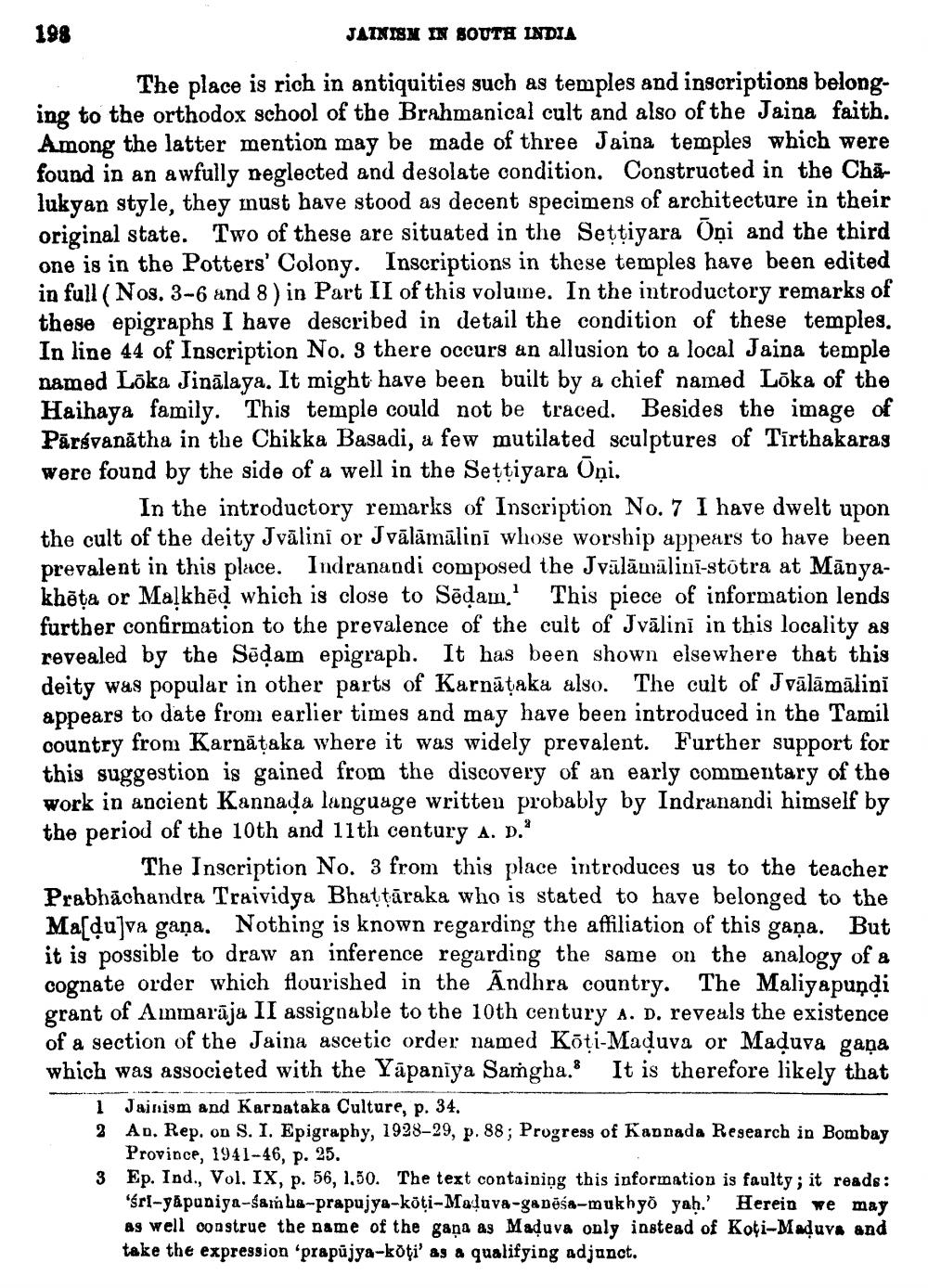________________
198
JATNISM IN SOUTH INDIA
The place is rich in antiquities such as temples and inscriptions belonging to the orthodox school of the Brahmanical cult and also of the Jaina faith. Among the latter mention may be made of three Jaina temples which were found in an awfully neglected and desolate condition. Constructed in the Chalukyan style, they must have stood as decent specimens of architecture in their original state. Two of these are situated in the Settiyara Oội and the third one is in the Potters' Colony. Inscriptions in these temples have been edited in full (Nos. 3-6 and 8 ) in Part II of this volume. In the introductory remarks of these epigraphs I have described in detail the condition of these temples. In line 44 of Inscription No. 3 there occurs an allusion to a local Jaina temple named Lõka Jinālaya. It might have been built by a chief named Lõka of the Haihaya family. This temple could not be traced. Besides the image of Pārsvanātha in the Chikka Basadi, a few mutilated sculptures of Tirthakaras were found by the side of a well in the Settiyara Oņi.
In the introductory remarks of Inscription No. 7 I have dwelt upon the cult of the deity Jvālini or Jvālāmālini whose worship appears to have been prevalent in this place. Indranandi composed the Jvālāmālinī-stotra at Mānyakhāta or Malkhēd which is close to Sēdam. This piece of information lends further confirmation to the prevalence of the cult of Jvālinī in this locality as revealed by the Sēdam epigraph. It has been shown elsewhere that this deity was popular in other parts of Karnataka also. The cult of Jvālāmālini appears to date from earlier times and may have been introduced in the Tamil country from Karnāțaka where it was widely prevalent. Further support for this suggestion is gained from the discovery of an early commentary of the work in ancient Kannada language written probably by Indranandi himself by the period of the 10th and 11th century A. D.
The Inscription No. 3 from this place introduces us to the teacher Prabhachandra Traividya Bhattāraka who is stated to have belonged to the Ma[du]va gaña. Nothing is known regarding the affiliation of this gaņa. But it is possible to draw an inference regarding the same on the analogy of a cognate order which flourished in the Āndhra country. The Maliyapuņdi grant of Ammarāja II assignable to the 10th century A. D. reveals the existence of a section of the Jaina ascetic order named Kõți-Maduva or Maduva gaña which was associeted with the Yāpaniya Samgha. It is therefore likely that
1 Jainism and Karnataka Culture, p. 34. 2 An, Rep. on S. I. Epigraphy, 1928–29, p. 88; Progress of Kannada Research in Bombay
Province, 1941-46, p. 25. 3 Ep. Ind., Vol. IX, p. 56, 1,50. The text containing this information is faulty; it reads:
'sri-yāpuniya-samla-prapujya-koti-Malava-ganēśa-mukhyo yah.' Herein we may as well construe the name of the gaña as Maduva only instead of Koţi-Msuva and take the expression 'prapūjya-koți' as a qualifying adjunct.




